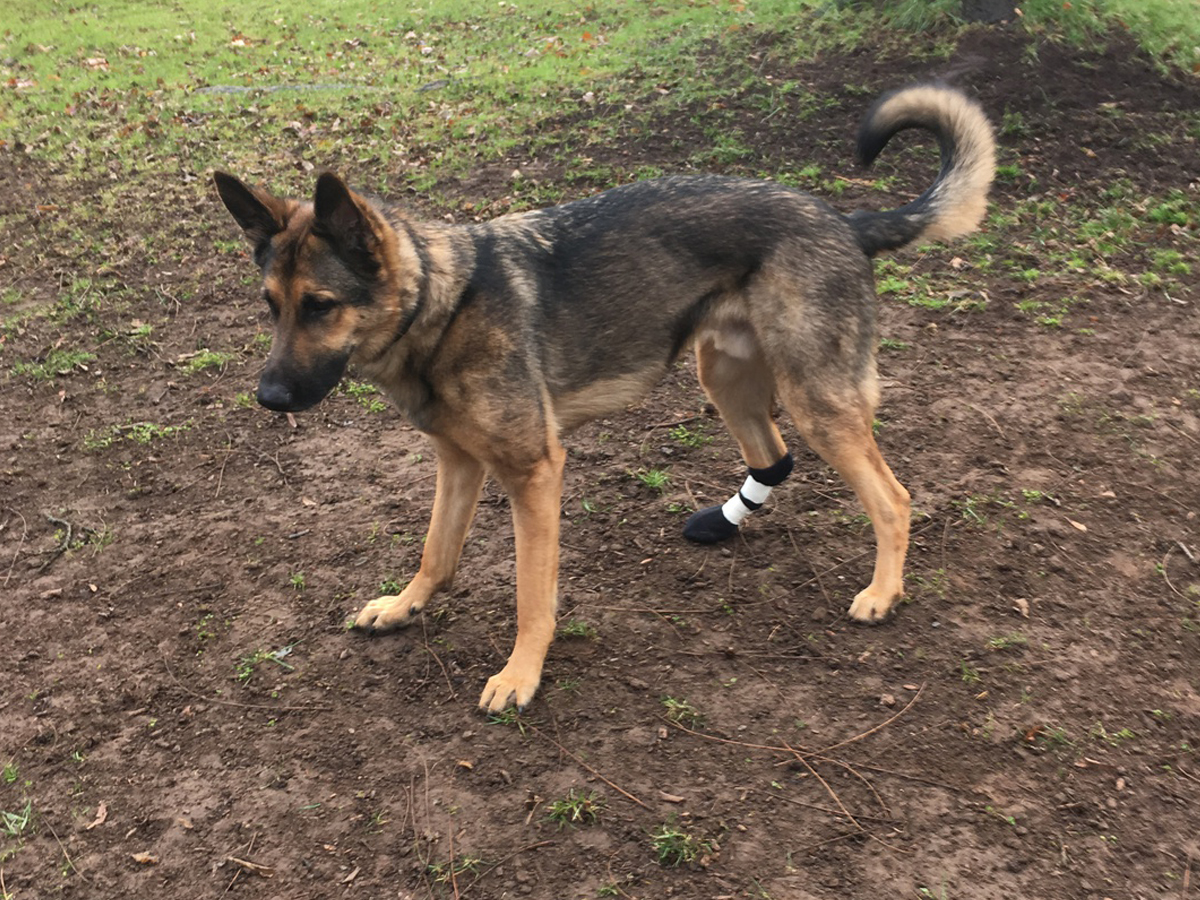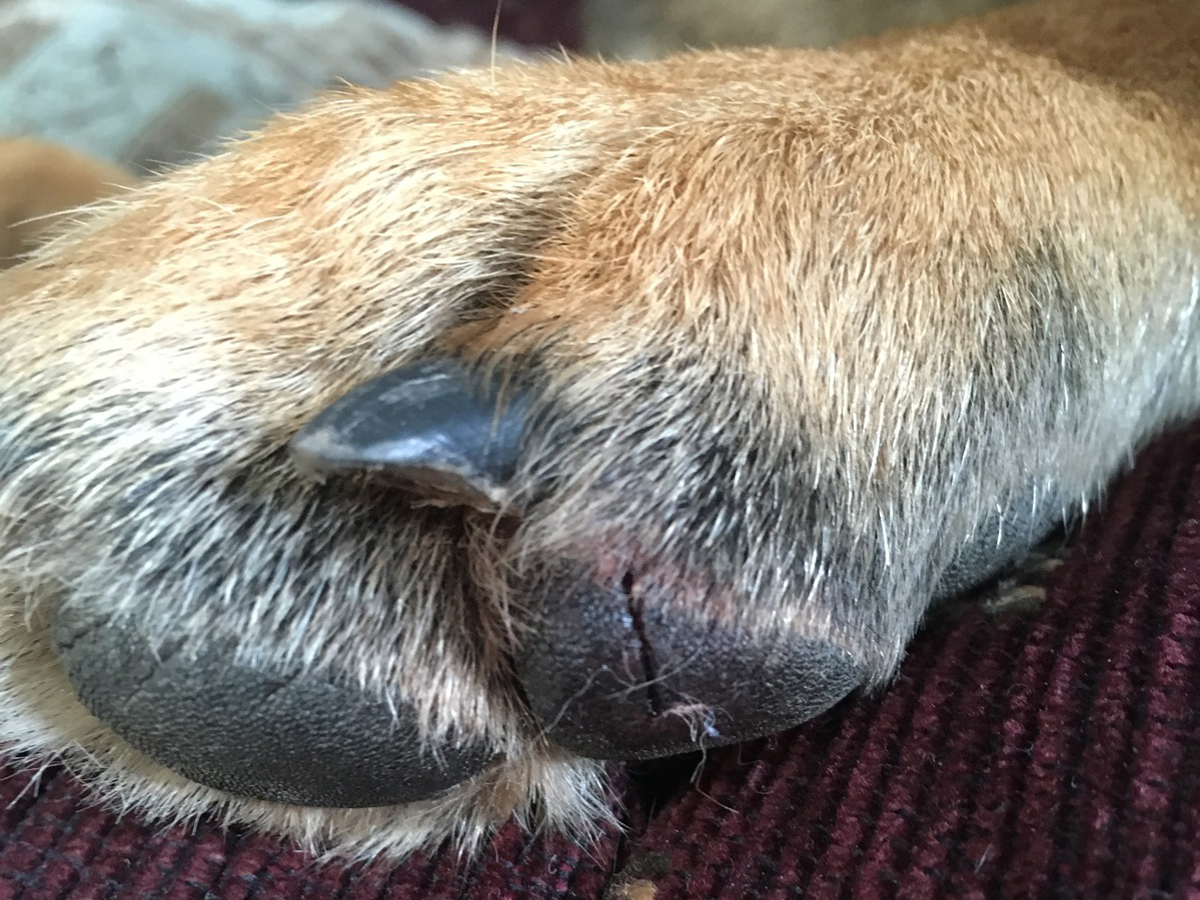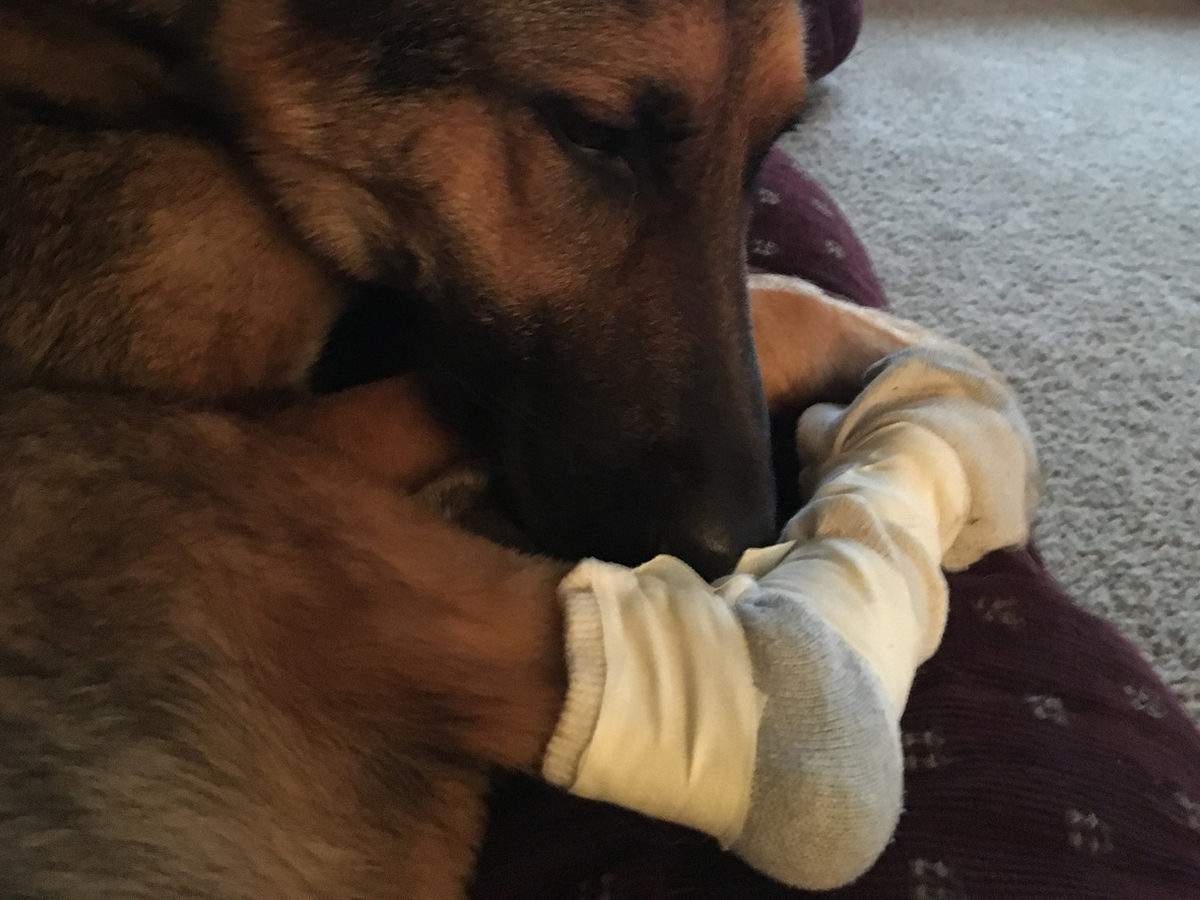When you buy through our links, we may earn money from our affiliate partners. Learn more.

Alicia Betz/Business Insider
- An injured paw pad can really dampen the spirit of an active dog.
- My dog has had multiple cuts and cracks on his pads, so I’ve learned how to tend to injured and cracked pads at home.
- You can care for minor cuts and cracks yourself, saving you money and a trip to the vet.
- Further injuries can be prevented by investing in a nice pair of dog boots and washing your dog’s paws after walks.
- Before administering any treatment to your dog, it’s important to consult your veterinarian.
Picture this: It’s a cold November day. The sun is reflecting off a fresh layer of snow, and the family is gathered together for Thanksgiving. Everyone is watching the dogs play outside before heading in for dinner. It’s a beautiful fall scene — until someone notices bloody paw prints in the snow. Leave it to my German Shepherd Silas to slice open the pad on the bottom of his paw on Thanksgiving Day.
So what did I do? What any self-respecting dog mom would do in this situation: freak out. After I calmed down, we corralled Silas into the bathroom to assess the damage and contain the blood. Then we called the vet and got the lowdown on what to do for an injured paw pad. Unfortunately for Silas but fortunately for you, this wasn’t the last time he cut or cracked his pads, so I’m now an expert in injured dog pads. Below, I’ll walk you through the steps to take care of your dog’s pad and get it back to playing fetch in no time.
Call the vet
Every situation and every dog is different, so the first thing you should do is call your dog’s vet. If bleeding is severe or the pad is completely cut off, you might need to take your dog to its vet or to the nearest emergency vet if it’s after-hours. Taking Silas to the vet usually causes him more anxiety and trauma than whatever is bothering him in the first place. Luckily, we were able to save a trip, and his vet talked us through what to do over the phone.
Clean the injured paw pad
Run your dog’s pad under warm water or use a saline solution to clean out any dirt or debris. (Note: The American Kennel Club advises against using hydrogen peroxide because it can be damaging to healthy tissue.)
Superglue the cut

Alicia Betz/Business Insider
You read that correctly. It seems strange, but this is what our vet advised us to do, and it worked perfectly. For smaller cuts or cracks, you can skip this step, but for a larger cut, manually hold the cut together and apply superglue. Hold the cut together until the glue dries. This acts in the same way a surgical glue would to hold a cut together.
Apply a balm
A pet balm or dog paw cream like Vermont's Original Bag Balm can help the cut heal and soften its dry pads. Make sure the superglue is dry before this step.
Bandage the paw
In a pinch when this first happened to Silas, we used a paper towel and a clean sock, but once we were able to get the proper materials (gauze and self-adhering tape), we found they worked much better. Securely wrap the gauze around the cut and the dog's entire foot. Then wrap the tape around the foot and partially up the leg. Self-adhering tape works well because it won't pull your dog's fur. Make the wrap tight enough that it won't slip off, but not so tight that it cuts off circulation.
Optional: If your dog is biting at the dressing, you can cover it with a sock or buy your dog a dreaded cone of shame.
Change the dressing
At least once a day, change the dressing and clean the injury again until the wound is healed. If you stop wrapping it too soon, it could reopen or get infected.
Try to keep your dog off their injured paw pad

Alicia Betz/Business Insider
For an active dog like Silas, this is the hardest step. One of the most effective ways to do this is to work on mentally stimulating activities to tire your dog out.
How to prevent this from happening in the future
- Keep your yard free of sticks and other sharp objects.
- Use dog boots if walking in hot weather or on salted surfaces in the winter.
- Rinse your dog's feet regularly in the winter. Cleaning Silas' paws is so easy with our MudBuster.
- Use a paw protection wax on your dog's pads before taking it out in the elements.
